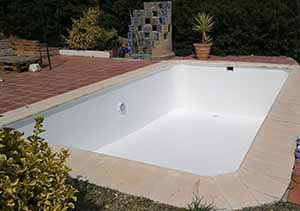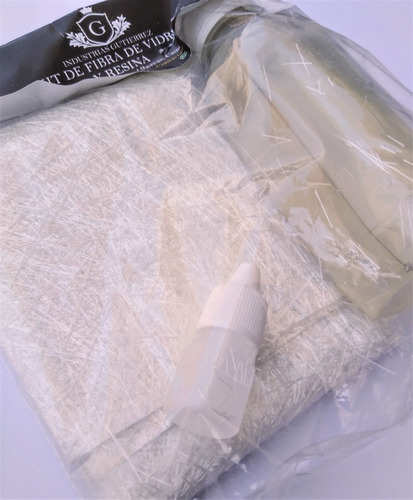

PET is subject to various types of degradations during processing. PET, as with many plastics, is also an excellent candidate for thermal disposal (incineration), as it is composed of carbon, hydrogen, and oxygen, with only trace amounts of catalyst elements (but no sulfur). One of the uses for a recycled PET bottle is for the manufacture of polar fleece material.
FIBRA DE VIDRIO Y RESINA CODE
PET has a resin identification code of 1. The primary reason is that plastic carbonated soft drink bottles and water bottles are almost exclusively PET, which makes them more easy to identify in a recycle stream. While most thermoplastics can, in principle, be recycled, PET recycling is more practical than many other plastic applications. If crystallizable PET is used, the trays can be used for frozen dinners, since they withstand both freezing and oven baking temperatures. Non-oriented PET sheet can be thermoformed to make packaging trays and blisters. Because of its high mechanical strength, PET film is often used in tape applications, such as the carrier for magnetic tape or backing for pressure sensitive adhesive tapes. These properties are useful in many applications, including flexible food packaging, surface protection and thermal insulation. When produced as a thin film (biaxially oriented PET film, often known by one of its trade names, "Mylar"), PET can be aluminized by evaporating a thin film of metal onto it to reduce its permeability, and to make it reflective and opaque (MPET). It is naturally colorless with a high transparency. It makes a good gas and fair moisture barrier, as well as a good barrier to alcohol (requires additional "barrier" treatment) and solvents. PET can be semi-rigid to rigid, depending on its thickness, and it is very lightweight.

PET is commonly recycled, and has the number "1" as its recycling symbol. PET consists of polymerized units of the monomer ethylene terephthalate, with repeating C10H8O4 units. The polyester industry makes up about 18% of world polymer production and is third after polyethylene (PE) and polypropylene (PP). The majority of the world's PET production is for synthetic fibers (in excess of 60%) with bottle production accounting for around 30% of global demand. The semicrystalline material might appear transparent (particle size < 500 nm) or opaque and white (particle size up to a few microns) depending on its crystal structure and particle size. In fact, the main aims of this technology and the hypothesis were overpassed reachin to positive results to the investigation and aplication of this.Polyethylene terephthalate (sometimes written poly(ethylene terephthalate)), commonly abbreviated PET, PETE, or the obsolete PETP or PET-P), is a thermoplastic polymer resin of the polyester family and is used in synthetic fibers beverage, food and other liquid containers films, thermoforming applications and engineering resins often in combination with glass fiber.ĭepending on its processing and thermal history, polyethylene terephthalate may exist both as an amorphous (transparent) and as a semi-crystalline material. then the field analysis, the steps to follow, the arquitectonic and ejecutive proyect, anda production costs.īy this way, there were succesfull results, as ten from eleven hypothesis were accomplished. After the investigation, we began with the make done. The materials which were used for doing the panel were reclaimed PEAD, glass fiber and resine. There was an investigation of the past, present and possible materials that can be used for this technology. The principal aim of this proyect was to make a possible material wich can be used in the construction industry and give the PEAD (a plstic waste) a diferent use. Doing this prototipe was a difficult, interessting, but with succesfull results work.


The purpose of doing this investigation was to create a material which in able to cover many uses at the same time, be easy to create and be ecologically friendly. There is a big variety of them, but there isn´t a panel that accomplishes most of the aims and goals that are required in a single element. ĪBSTRACT: The panels are a construction material which is very used in the industry. Tesis (Ingeniería en Arquitectura), Instituto Politécnico Nacional, ESIA, Unidad Tecamachalco, 2019, 1 archivo PDF, (253 páginas). Instituto Politécnico Nacional, Escuela Superior de Ingeniería y Arquitectura, Unidad Tecamachalco, México. Paneles de pead recubierto con resina y reforzado con fibra de vidrio, aplicados a una escuela integral de artes en Nicolás Romero, Estado de México.


 0 kommentar(er)
0 kommentar(er)
